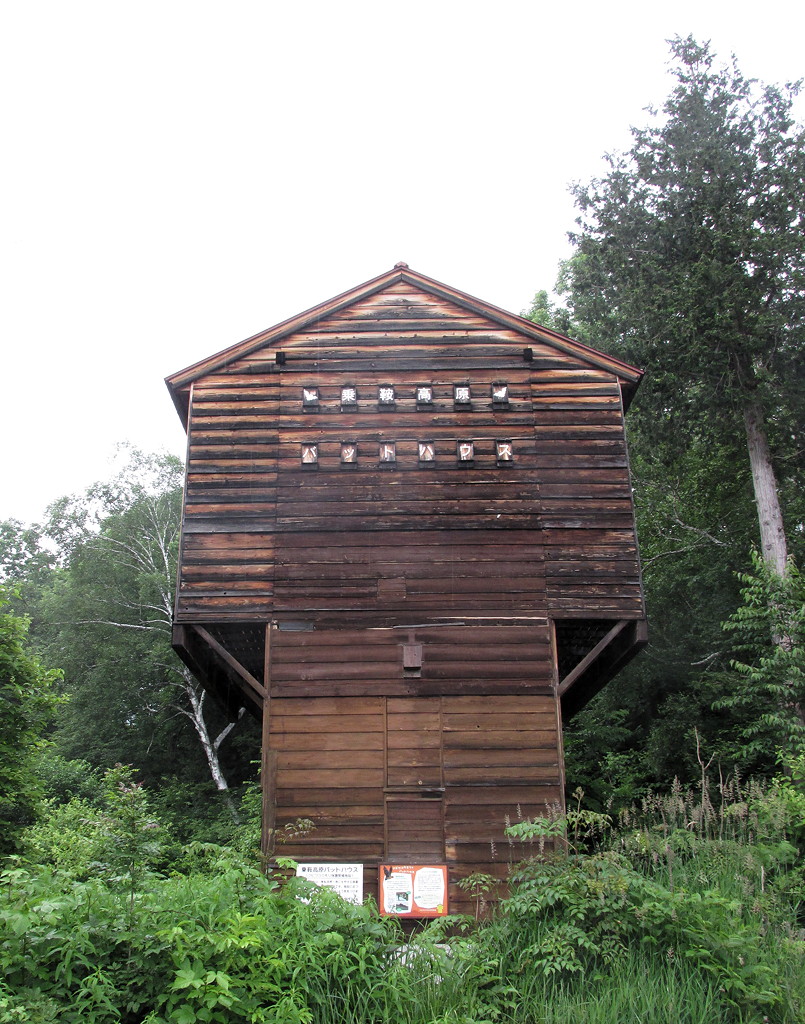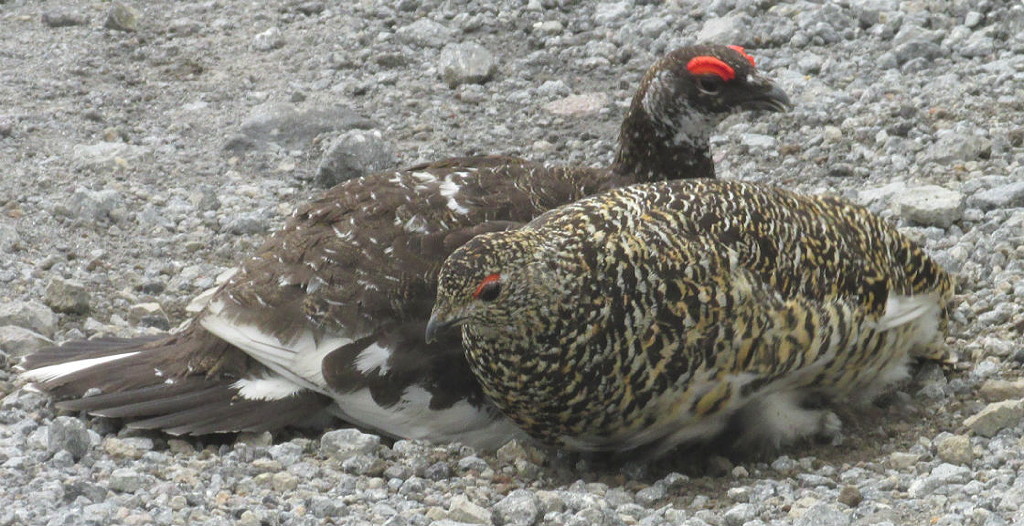Gifu Prefecture
Mount Norikura 乗鞍

Mt Norikura — an active volcano — rises to just under 3,000 m roughly due west of Matsumoto City in Nagano Prefecture. It comprises several peaks, among them Kengamine, Daikoku-dake, Fujimi-dake and Ebisu-dake, which straddle the border between Gifu and Nagano prefectures.
Nearby Ontake-san suddenly erupted in September 2014, killing over 60 hikers who were on the mountain at the time.
During the main hiking season Norikura can be reached in about an hour by Nohi bus or Alpico bus from Hirayu Onsen in Gifu Prefecture, or by a mixture of train and bus from Matsumoto City in neighbouring Nagano Prefecture. The latter service is via Shinshimashima Station and Alpico bus. Both bus routes are during the summer and autumn only — please check all departure and arrival times at the ticket office in Takayama, Hirayu Onsen, Matsumoto or Shinshimashima.
 Public transport (buses) runs regularly from Hirayu Onsen during the main hiking season. And, come rain or shine, the summit attracts hordes of tourist buses, which disgorge hundreds of visitors into the souvenir shops at Tatamidaira for 15 minutes before heading off to the next stop on the itinerary.
Public transport (buses) runs regularly from Hirayu Onsen during the main hiking season. And, come rain or shine, the summit attracts hordes of tourist buses, which disgorge hundreds of visitors into the souvenir shops at Tatamidaira for 15 minutes before heading off to the next stop on the itinerary.
Taxis are also allowed to access the roads -- Eco Line and Norikura Skyline -- to the car park at Tatamidaira.
 Norikura is one of the most convenient locations in Japan to see Rock Ptarmigan as it does not require six or 10 hours of hiking up steep mountain trails! The use of public transport to get to and from the summit area means a minimum of hiking is required, although there are plenty of opportunities for this if you so wish.
Norikura is one of the most convenient locations in Japan to see Rock Ptarmigan as it does not require six or 10 hours of hiking up steep mountain trails! The use of public transport to get to and from the summit area means a minimum of hiking is required, although there are plenty of opportunities for this if you so wish.
Norikura supports good numbers of Rock Ptarmigan and other high-altitude species such as Spotted Nutcracker, Alpine Acentor and Japanese Accentor. Asian House Martins breed under the eaves of the buildings at Tatamidaira, and in the lower forests Red-flanked Bluetail, Olive-backed Pipit, Japanese Leaf Warbler, Grey-bellied Bullfinch and other forest birds can be seen.
Rock Ptarmigan can be seen in several places — around Daikoku-dake peak, beside the trail on the way up to the summit of Kengamine, from the boardwalk through the flower meadow directly below Tatamidaira, and indeed anywhere where there is Japanese Stone Pine and suitable open areas for feeding.
Rock Ptarmigan are fickle birds — they are hard, often impossible, to find in fine, sunny weather (when they prefer to hide in the midst of clumps of Japanese Stone Pine). By contrast, in rain or fog, they often feed out in the open or even along the trails between the peaks. The best chances of seeing them are from mid- or late July onwards as the chicks have hatched by then. From late October or early November the birds begin moulting into their white winter plumage, which they retain until the following spring.
 Access:
Access:
Takayama Bus Terminal is served by express buses from Osaka, Kyoto, Nagoya, Kanazawa, Toyama and Tokyo. Nearby is Hirayu Onsen, which can be reached by local bus from Matsumoto, Takayama or Kamikochi.
During the summer season (mid-July until the end of August) there is a night bus from Shinjuku in Tokyo to Hirayu Onsen, departing Shinjuku Busta Bus Terminal at 23:00 and arriving at about 03:15 (reservation required).
Also, during the early part of the summer season, there is a bus from Hirayu Onsen to Tatamidaira Bus Terminal at Norikura, departing at about 04:00 and arriving in time for sunrise. Details of this service can be checked at Hirayu Bus Terminal or Nohi Bus Co. homepage.
https://www.nouhibus.co.jp/english/
In order to protect the fragile environment there, no private vehicles are allowed to be driven to the top of Norikura. They can be parked at Hirayu Onsen or Honokidaira parking area (where the bus also stops on its way to/from Norikura).
If travelling from Matsumoto City, take the Matsumoto Dentetsu Kamikochi Line train to Shinshimashima Station (the final stop) and change to the bus for Norikura Kogen Kanko Center. Get off at the Kanko Center-mae bus stop and transfer to the bus that will take you to Tatamidaira Bus Terminal at the summit of Norikura.
At Norikura Kogen Kanko Center there is a tourist information office. About a 15-minute walk away from the car park is Seseragi-no-yu, a free onsen.
 In one corner of the car park there is a bat house where there is a roost of the Japanese Short-tailed Bat.
In one corner of the car park there is a bat house where there is a roost of the Japanese Short-tailed Bat.

Accommodation:
At the top of Norikura there are two mountain huts where hikers can stay overnight. Katanogoya (Tel: 090-4365-8577 & 0263-93-2002; http://www6.plala.or.jp/bell-suzuran/katanokoya.html), is situated just below Kengamine peak. Hakuun-so (Tel: 090-3480-3136; https://norikura-hakuunso.jimdofree.com) is located on the north side of Tatamidaira car park. Reservations can be made between early June and mid-October).
In addition, nestled in the forest at the foot of the mountain's east side, there is Kuraigahara-sanso (Tel: 090-9001-7362; http://www.kuraigahara.jp). This is situated about an hour's hike downhill from Tatamidaira, on the east side of the mountain. The buses between Norikura-kogen and Tatamidaira stop outside if you do not want to hike up or down the mountain, but the number of buses per day is limited.
Each hut charges ¥9,000–¥10,000 per night (this includes Japanese style dinner and breakfast). No reservations are required, but these lodges are often busy with hikers between late June and late October (especially on weekends and public holidays and especially when the autumn colours are at their peak) so reservations are recommended. All huts are closed during the winter months from November to May.
 In 2020, Hakuun-so will be open from mid-June until mid-November, and Katanogoya will be open from late June until late October.
In 2020, Hakuun-so will be open from mid-June until mid-November, and Katanogoya will be open from late June until late October.
At Tatamidaira Bus Terminal there are toilets, restaurants, vending machines for drinks, and gift shops. Katanogoya also has toilets, a small restaurant and a shop.

© 2020 Mark Brazil & Chris Cook
Last updated: 20200709
